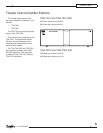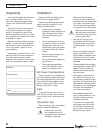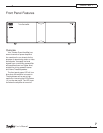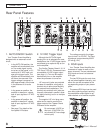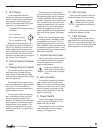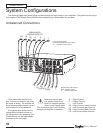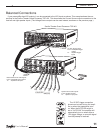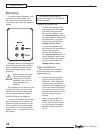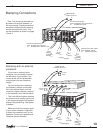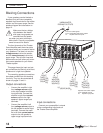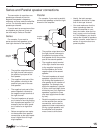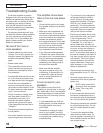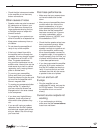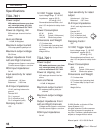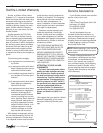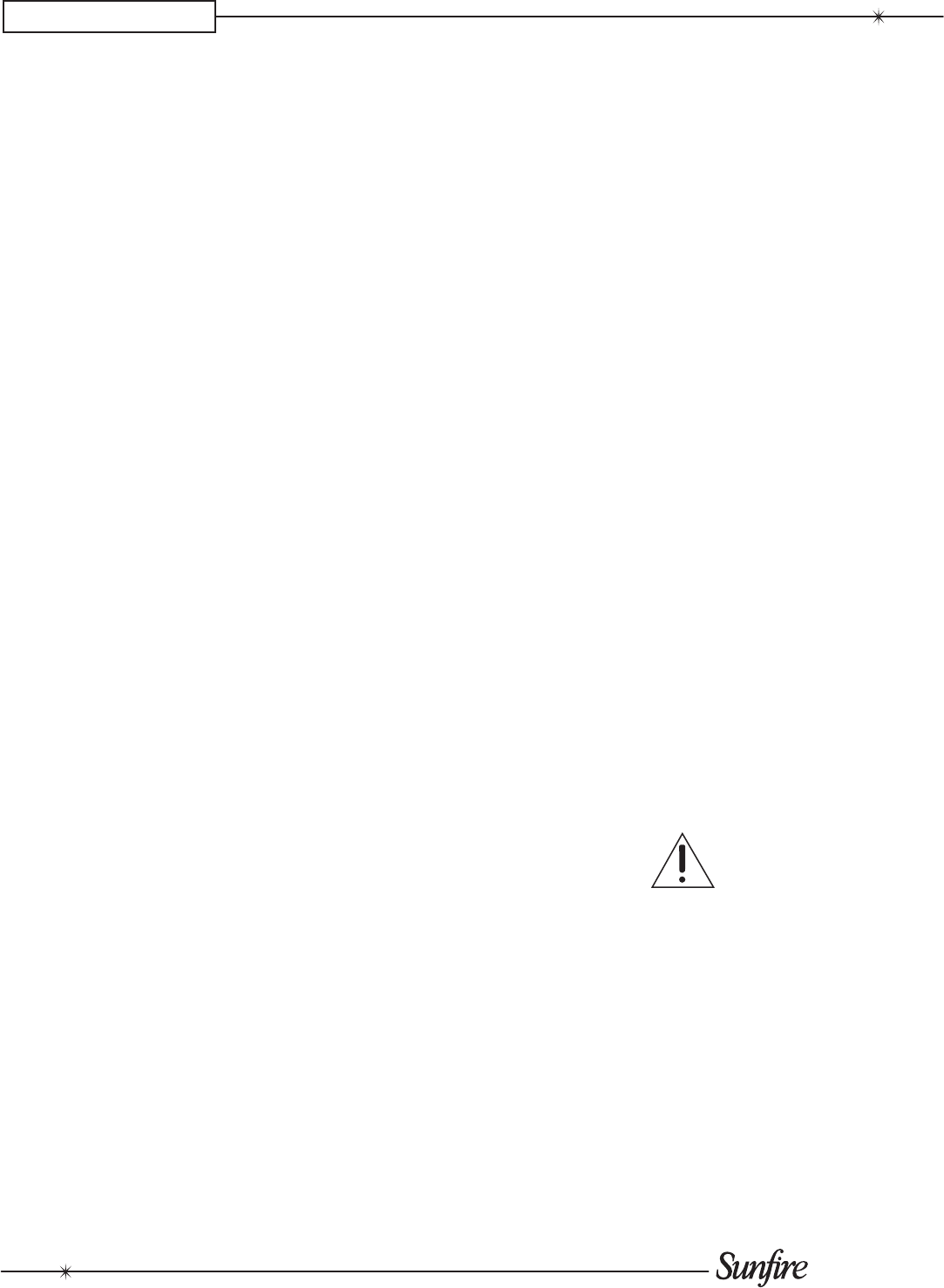
User's Manual
16
APPENDIX
The Sunre Amplier is expertly
designed and built to provide years of
trouble-free performance. Most prob-
lems that occur can usually be solved
by checking your setup or making
sure that the audio and video com-
ponents connected to your processor
are on and fully operational.
The following information will help
you deal with common setup problems
you may experience during normal
use of your unit. If the problems still
persist, please contact your Sunre
Dealer for assistance.
No sound from one or
more speakers
• Speaker cables may have come
undone. Turn off your system and
check the cables, and tighten the
amplier and speaker binding
posts.
• Broken audio cable.
• The preamplier volume level is
low for the channels concerned.
Recheck the preamplier calibra-
tion procedure.
• A preamplier Mute switch may be
on, or an external processor loop
or a tape monitor loop is engaged.
• Check that your preamplier or
source is running the correct sur-
round sound mode. Maybe it is set
for stereo when you were expect-
ing 5.1 surround sound.
• Check in case any missing chan-
nels have been turned off in a
preamplier setup menu. For
example, the center amplier
channel will not receive a signal
if the preamplier has been set to
"Phantom."
• The Auto/on/off switch might be in
the off position.
• One of the fuses for the current
source outputs may have blown.
The amplier shuts down
often or the line fuse blows
often
• Check that the positive and nega-
tive speaker wires are not shorted
together.
• Make sure that no speakers are
shorted internally. If you have an
ohm-meter, disconnect the speaker
wires and measure the resistance
between the speaker’s positive
and negative terminals. If the read-
ing is less than 2 ohms, the speak-
ers may have an internal short.
Measure all speakers and check
their impedance specications.
•
If you have connected speakers
in Parallel, the overall impedance
may be too low. It is recommended
that you rearrange the speakers
in Series to increase the overall
impedance, thus taking some of
the load off the amplier.
• Make sure that the amplier
has good ventilation and is not
overheating. If the amplier is in
a closed rack, open up the rear
panel or use a quiet fan for im-
proved ventilation.
A hum is heard in your
speakers
This problem is more than likely
caused by a “ground loop” in your sys-
tem, rather than a fault in the amplier.
Follow these steps to isolate the main
cause of the hum; there may even be
more than one.
• If your preamplier has XLR bal-
anced outputs, use them because
they offer greater immunity to
noise elds.
• Remember to unplug all compo-
nents in your system, including
the amplier, before disconnecting
or connecting any cables during
troubleshooting.
Troubleshooting Guide
• Try to have all of your equipment
on the same electrical outlet or
circuit. Group all the low power
components (preamp, CD player,
DVD etc.) on a single outlet or
power strip. This is provided that
the overall current draw from your
equipment does not exceed the
rating of the outlet or breaker.
• Disconnect all cables which come
from outside the room, and check
if the hum goes away. This in-
cludes such connections as cable
TV, satellite TV, or roof top an-
tennas. Make sure that they are
disconnected where they rst enter
the room, so they are making no
connection to the preamplier or
the TV, or any other component. If
the hum is caused by the cable TV
line, then you will need a “ground
loop isolator.” This is an inexpen-
sive device tted in line with the
coaxial cable feed. Contact your
cable company or your Sunre
Dealer for assistance.
• Disconnect all connections from
the preamplier to your TV, VCR or
DVD.
• As a test, disconnect any other
component which has a grounded
power cord.
NOTE: Never remove the
ground pin from any power
cords. This is very dan-
gerous.
• If the hum persists, disconnect all
the source components one at a
time from the back of the preampli-
er, until you identify the problem.
• Ground loop isolators are available
for audio lines and video. You can
ask your Sunre Dealer for assis-
tance.
• Try moving the speaker cables
away from any power cords. Try
just one speaker, connecting it to
each amplier channel and see if
one channel is bad.



